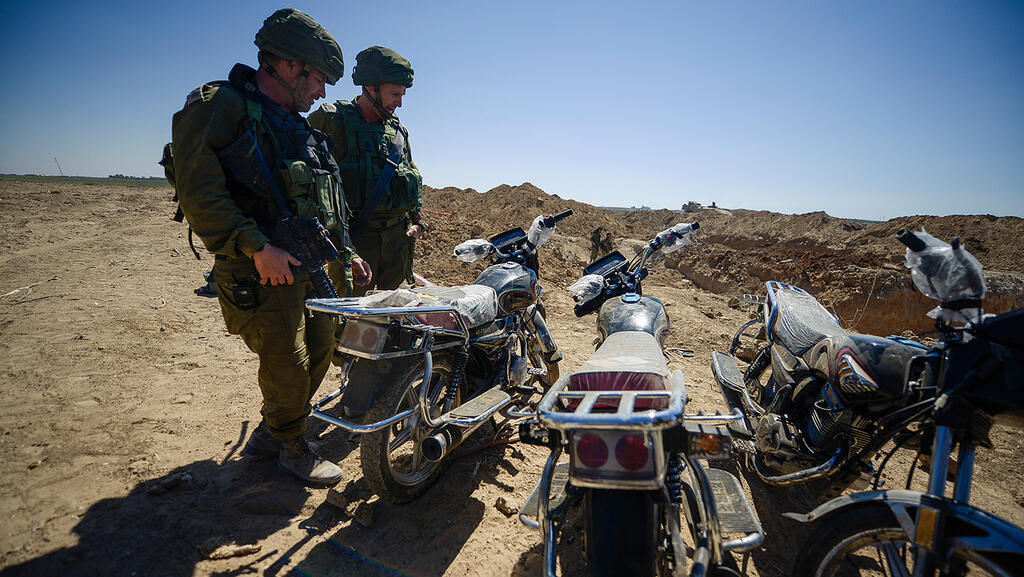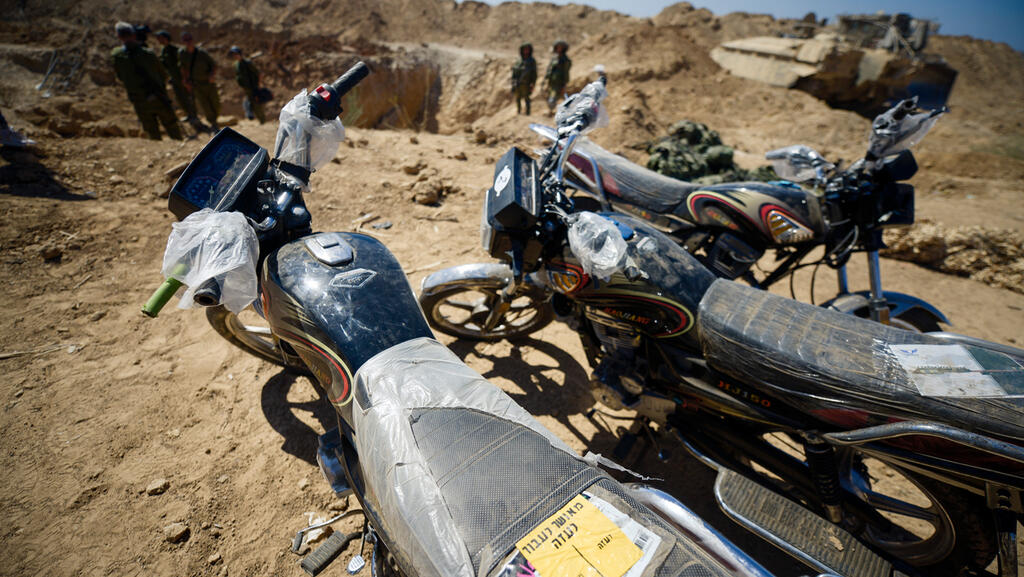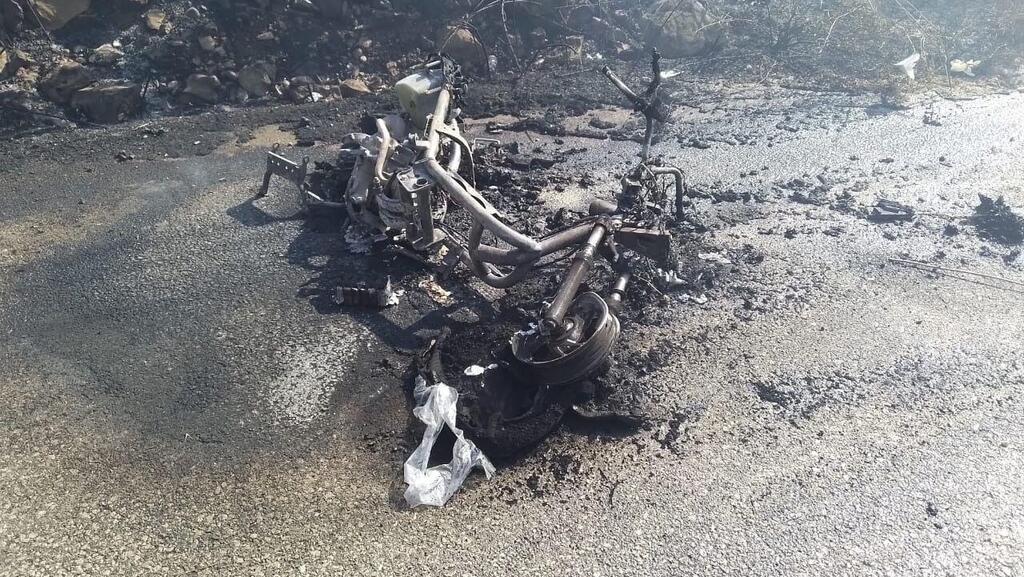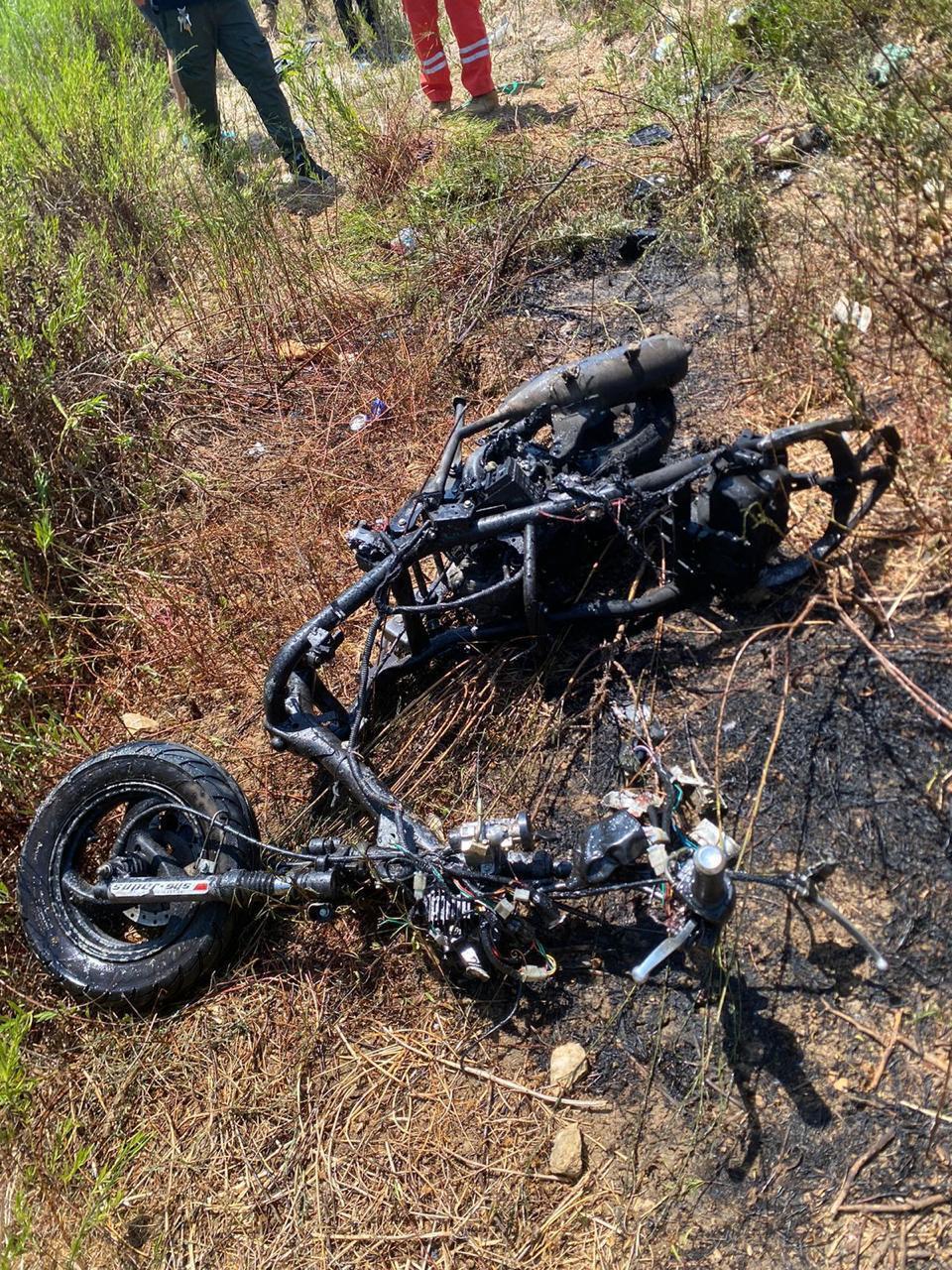From a practical standpoint, it's easy to understand why terrorist organizations choose motorcycles for transportation: they're effective in delivering messages, equipment, weapons and terrorists; conducting patrols; and carrying out attacks and assassinations.
These vehicles are relatively small and light, allowing for quick travel from one place to another. Motorcycles are suitable for riding in various terrains, whether it's the sandy ground in Gaza or the mountainous roads of southern Lebanon.
Motorcycles also allow for easy escapes through narrow streets. In the terror groups’ training camps, off-road riding training is conducted, and motorcycles are hard to miss in their propaganda videos. An example is the video released by Hezbollah of the "Imad 4" underground facility where a terrorist on a motorcycle is shown.
In recent months, IDF airstrikes against Hezbollah terrorists on motorcycles have become routine. Last week, Lebanese media reported that IDF drones attacked motorcyclists in southern Lebanese villages.
In the weeks prior, motorcycles were attacked in areas including Tyre in southern Lebanon. While terrorist organizations don't rely solely on motorcycles, there’s a long-standing connection between various terrorist organizations and motorcycles.
On October 7, 2023, the Israeli people witnessed how Hamas terrorists used motorcycles to infiltrate communities near the Gaza border.
Arab media reported that these were cheap, fast and easily maneuverable motorcycles, most of which are either manufactured or assembled in Egypt and are branded as DAYUN and HALAWA. HALAWA is an Egyptian company that manufactures and imports motorcycles, with these being the cheapest among the Chinese motorcycles sold in Egypt.
According to reports, most of these motorcycles arrived in Gaza via underground tunnels. Some spare parts for motorcycles were also brought into the Gaza Strip from Israel via special coordination before the war. These parts are considered dual-use equipment (usable for both civilian and terrorist purposes), so special approval was required to bring them into Gaza.
There were also instances of attempts to smuggle such equipment that were foiled. In December, it was reported that the IDF discovered a tunnel shaft containing motorcycles used by Hamas terrorists on October 7.
Looking at the northern border, in May 2023, a video was released showing a Hezbollah drill in which motorcycles were used. The terrorists were seen training in shooting while riding in pairs. On October 7, a video was broadcast on the Lebanese Al-Jadeed channel showing motorcyclists with Hezbollah flags at the Lebanon border.
During the war, videos were released from Lebanon showing large motorcycle convoys holding demonstrations in support of Gaza, including in Beirut and the Nahr al-Bared Palestinian refugee camp in northern Lebanon.
Motorcycles aren't used exclusively by Hezbollah in Lebanon. The country is flooded with motorcycles, with the issue being that most aren't registered. In May, an article in the Hezbollah-affiliated Lebanese newspaper Al-Akhbar discussed the continuous import of motorcycles into Lebanon, even during the country's most difficult times.
Between 2014 and 2023, 626,000 motorcycles and electric bikes were imported into Lebanon, while the number of registered vehicles in the country, according to 2021 data from the Lebanese Interior Ministry, doesn’t exceed 290,000.
Owners of unregistered motorcycles play a cat-and-mouse game with local security forces. Lebanon's economic situation and the high cost of registration lead many to skip the process. The Lebanese opt for motorcycles because they're small, have low fuel costs, and are convenient for travel in large cities and their suburbs.
The use of motorcycles for terrorist purposes is well-known in the Arab world
Al-Akhbar's article noted the most imported category into Lebanon is small motorcycles, up to 250cc, and reported that Chinese motorcycles are the most sold in the country.
The use of motorcycles for terrorist purposes is well-known in the Arab world. Over 10 years ago, discussions already emerged about Hezbollah's use of motorcycles for military purposes. A 2010 article mentioned that Iranians, especially the Islamic Revolutionary Guard Corps’ Quds Force, are using motorcycles for special forces missions in training Hamas and Hezbollah.
It also reported that terrorist organizations associated with global jihad operating in Sinai frequently used motorcycles to carry out attacks.
Some countries have tried to combat motorcycle use to prevent terrorism. In Iraq, for example, authorities decided to restrict motorcycle riding times in 2022 to "address the security situation related to terrorists using motorcycles to carry out attacks."
In January of that year, the Iraqi Interior Ministry banned all types of motorcycles from operating between 6 p.m. and 6 a.m., with violators risking confiscations and hefty fines. The same decision also prohibited two people from riding on the same motorcycle together.
Military officials claimed this was an attempt to enforce the rule of law, but many Iraqis were unhappy with it. The decision hurt the poor, who couldn't afford other vehicles, and eliminated their only option to avoid traffic congestion. Many Iraqis began protesting, which, according to reports in the newspaper Al-Araby al-Jadeed, led to the decision being reverted.







